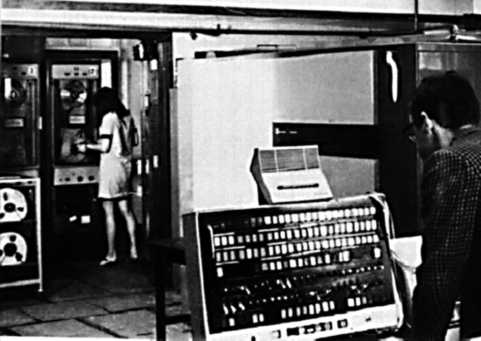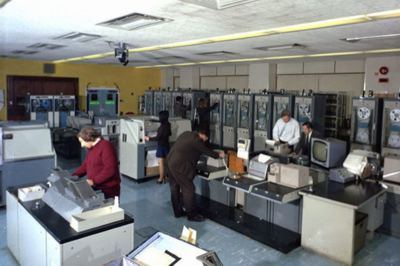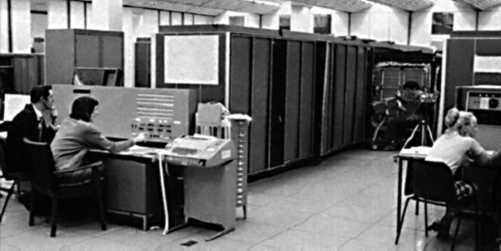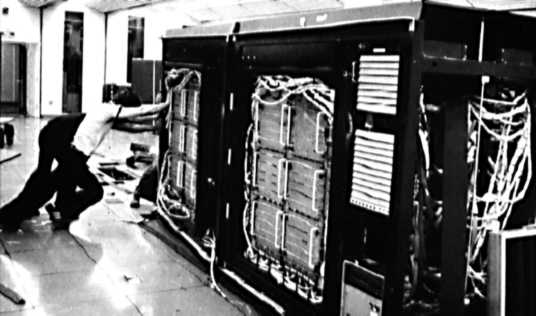| Manchester Computers of the 1950s |
| Written by Historian | ||||||
Page 2 of 2
MUSE - Towards A SupercomputerIn 1956 Kilburn decided to start building yet another machine - MUSE - using junction transistors. This was to be really powerful, the first supercomputer of its era. It was perhaps the technical triumph of the Manchester design team. The Mark I had introduced index registers - an indispensable tool in programming. The MUSE added to this the idea of virtual paged memory. Something that we are only just getting used to on desktop machines. The idea was that you could simulate additional memory by writing out pages that weren’t needed and reusing the resulting free memory. Of course the cost of this approach is that you have to read the page back in if it is needed again and this slows things down. A sort of paging system had been implemented in software in the Mark I’s high level language - but in MUSE the paging was built into hardware. It made use of a content addressable memory that today we would describe as an address-translation look-aside buffer. There was even a “drum learning” program which organized the page replacement strategy in fast ROM. This might even represent the first use of AI techniques in a machine! Perhaps even more important that the virtual paged memory hardware was the fact that the MUSE was the first machine to be designed taking the needs of the operating system into account. It had 128 24-bit addressing registers. Of these application programs could use 90. The rest were for the operating system. Instructions addressed memory using an offset which was added to any two of the base registers. A program could maintain the base address, offset and bounds of a data structure within the registers. The problem with having so many registers is that they all had to be saved when the processor switches its attention to another running task. MUSE did its best to make such context switches fast. It had three program counters - one for users, one for the operating system and one for the hardware based “extra code” routines that extended its instruction set. The 37 addressing registers dedicated to the operating system were used to keep track of running programs and were not swapped. MUSE was also a pipelined machine, with vectored interrupts and interleaved memory. It would be easily understood by a modern computer designer except for one thing - it was an asynchronous machine and had no central clock. MUSE becomes AtlasThe MUSE was taken up by Ferranti who were convinced by the Mercury that what the world really needed was a scientific super computer. The new machine was called the Atlas and it could claim to be the fastest and most sophisticated computer in the world. Manchester had leap frogged the USA in computer design - but the companies like Control Data Corporation (CDC) were catching up. The published material on the MUSE was read carefully by Seymour Cray, CDC’s chief designer, who then went on to create the CDC 6600 - a more powerful and more successful machine than the Atlas.
The Manchester Altlas was the first of production versions. Ferranti sold only two other of these machines. One went to the University of London which purchased it jointly with BP the other to the UK Science Research Council which was installed in a purpose-built Atlas Computer Laboratory at Chilton for use by government agencies and universities.
Chilton Atlas Ferranti did go on to build the Atlas 2 - surprisingly with help from Cambridge University. Only one Atlas 2 was ever sold and Ferranti decided to give up the field in 1962 when the sold out to ICT - later to become ICL. ICT decided to concentrate on there 1900 range of commercial machines and the Atlas was scrapped. MU5The commercial failure of the Atlas didn’t put a stop to Manchester’s pioneering efforts. They moved on, in 1966, to an almost legendary machine - the MU5, Manchester University 5. Although perhaps not as revolutionary as MUSE, the MU5 brought all of the ideas together in an advanced and modern machine. It was built using integrated circuits - but not the LSI do-everything chips we use today. The MU5 used ECL, Emitter Coupled Logic which crammed only a few tens of transistors on each chip but it had the advantage of being fast. The MU5 was twenty times faster than the Atlas but it wasn’t just a faster version of the old machine. Experience of the Atlas changed the designers’ ideas of how things should be done. For example, there was now only one general purpose register. Variables were automatically cached in a 32 line fully associative cache. This allowed the compiler writers to ignore the problem of register assignment. It was highly pipelined - the ALU used a five-stage pipe with a 50ns operation time for each stage. It also had branch prediction - something we have only just seen introduced in the Pentium. It’s memory organisation was also advanced - a segmented paged design that hid the actual physical structure of the memory from the programmer. The MU5 in use With the sale of Ferranti’s computer business to ICT it fell to them to help with the MU5 project and they based their 2900 series machines on the MU5. So while there was only ever one MU5 its ideas lived on in the 2900 and in many other machines. It was the last of the Manchester computers - switched on in 1974 for general use it worked until 1979. When Kilburn retired there was an MU6 project but never an MU7 or 8. The era of building large mainframe computers was almost at an end and it was time for the integrated circuit designers to see how much of the best could be squeezed onto a single chip.
The MU5 on its way out... Finally you might like to know how these super computers, the Atlas and the MU5, stand up against our current desktop machines. It isn’t an easy comparison because these two machines were both asynchronous, i.e. the didn’t work at a fixed speed. The Atlas had 96Kbytes of RAM and could manage about .6 MIPS fixed/floating point adds. The MU5 had 128Kbytes and could manage about 20MIPS fixed point adds and 4MIPS (floating point adds). Not really at all super by today's desktop standards but we had to start with something...
Related ArticlesAtlas Computer Switched on 50 Years Ago
To be informed about new articles on I Programmer, sign up for our weekly newsletter, subscribe to the RSS feed and follow us on Twitter, Facebook or Linkedin.
Comments
or email your comment to: comments@i-programmer.info
<ASIN:0850121558> <ASIN:0684832674> <ASIN:0806531010> <ASIN:0812973011> |
||||||
| Last Updated ( Saturday, 09 October 2021 ) |
 The Atlas control panel
The Atlas control panel



